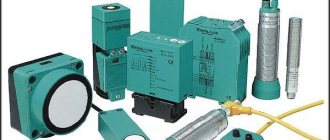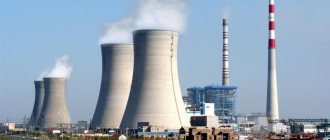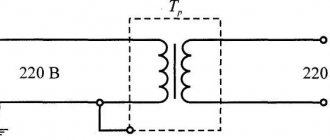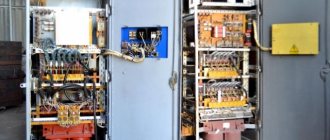Who doesn't dream of finding a treasure at least once in their life? And few people suspect that precious resources are right under our feet. We own the greatest wealth - geothermal energy.
Have you ever seen a geyser?
Not really
Geothermal energy is heat coming from the earth and is a natural, renewable resource for producing electricity. The Earth's heat is inexhaustible in volume; it exceeds all energy resources combined millions of times.
Even 1% of the Earth's energy replaces hundreds of power plants. All that remains is to learn how to use it.
Geothermal energy is one of the most promising in the world.
Geothermal power plants or what is geothermal energy
When getting acquainted with categories related to the topic under consideration, they usually mention geothermal energy obtained from thermal sources of the earth's interior. In practice, it comes from the planet’s core, whose temperature is about 3600 degrees, and is radiated towards the earth’s surface. Heat from underground sources (geysers, in particular) is removed through special wells in the form of steam heated to a high temperature, rotating the blades of generator turbines.
Industrial complexes that implement the described process (geothermal power plants) make it possible to obtain electrical energy used for the needs of the average consumer. The latter, like conventional hydroelectric power plants, is distributed over an extensive network of electrical lines and enters the load on the end-user side. Geothermal plants, as a rule, are included in the energy complex of a specific region or the entire state.
Characteristics of the Earth's heat reserves
Characteristics of reserves Numerical value
| Energy released when the core cools by 1 degree Celsius | 2*10^20 kWh |
| Core temperature | 6000 degrees Celsius |
| Core cooling rate | 300-500 degrees Celsius in a billion years |
| Heat flow | 47 Terawatt |
| Thermal power of the Earth | 33 Terawatt |
| Heat flux density | less than 0.1 Watt/m2 |
Even one percent of this power is equivalent to more than one hundred power plants. But the low heat flux density makes it difficult to collect and process this energy.
Geothermal resources
The source of energy for geothermal stations is the bowels of the earth, in which heat accumulates due to processes continuously occurring in the core. Let us consider in detail the history of the discovery of these deep sources and trace the chronology of the creation of means of converting coolant energy into electricity.
History of development
Methods for the practical use of energy from geothermal sources were known to man back in ancient times (in the 1st century AD). It has traditionally been used in the following forms:
- Swimming in open bodies of hot water (near geysers, for example).
- Adopting bath procedures based on the use of the same thermal waters.
- In the form of an effective urban heating system.
In ancient Rome, representatives of the upper class loved to relax in isotherms (the so-called baths heated by heat sources from the bowels of the earth). Later, in the 14th century, the inventive French built the first heating system in the history of the planet, also using the geothermal potential of the globe. It began to be used on an industrial scale in Italy in 1827. The earth's heat energy was used by Italian engineers to extract boric acid from volcanic rocks. Over time, experts learned to distinguish between petrothemal and hydrothermal sources.
Petrothermal energy
The so-called “petrothermal” energy is a type of geothermal direction when the heat of dry rocks is used as a source. When exploring this method of energy extraction, it is important to note the following points:
- the increase in the temperature of rocks with the depth of their occurrence is characterized by a special indicator called a “gradient”;
- on average, in the thickness of the earth’s crust in different regions of the Earth it is 0.02 ° C per meter;
- with the stated gradient, the temperature at depths of about 5 km can reach 100 C.
This temperature gradient is quite enough to practically use it to generate electricity.
Hydrothermal vents
Hydrothermal heat sources are groundwater of natural origin, which in terms of energy efficiency are much superior to their petrothermal counterparts. In addition, the described method does not require significant expenditures of funds and labor resources.
Please note: The creation and implementation of such systems is only possible in places where geothermal waters are present in sufficient quantities and are available for development.
An example of such a place is the explored zones of hidden volcanic activity. In this regard, hydrothermal accounts for only about 1% of usable geothermal resources. The remaining 99 percent are petrothermal springs, which can be found almost anywhere on the earth's surface.
Main features of geothermal energy
The features of geothermal energy include the following characteristic features:
- Comparative difficulty of accessing renewable heat sources.
- Difficulties in choosing the right method for obtaining and converting energy.
- The need to take into account the pros and cons of geothermal power plants being built in selected areas of the country.
Additional information: The source of heat is either dry rocks or geothermal waters located in the bowels of the earth and available for use.
To obtain energy from thermal reserves of the subsoil, one of the following known methods is used:
- Traditional approach.
- Extraction using pumping stations.
- Fountain method.
- Geocirculation method.
The traditional method involves direct access to a heat source with energy output through a borehole channel. When implementing the fountain method, the resource self-flows due to the internal pressure of the steam accumulated in the depths. Pumping equipment is used in situations where the second option with independent access to the well is practically impossible to implement. The latter method is notable for the fact that the completely used resource is sent back to the bowels of the earth.
Geothermal power plants advantages and disadvantages
The indisputable advantages of using geothermal energy include:
- significant reserves of thermal energy, which, if properly exploited, can be considered renewable;
- efficiency achieved by abandoning traditional fuels;
- environmental cleanliness of geothermal sources and stations that do not emit harmful substances into the atmosphere;
- self-sufficiency, eliminating the need to use third-party energy sources (besides the first launch of the system).
Please note: Geothermal thermal power plants (GPS) also do not require significant operating costs.
The advantages of a geothermal power plant include the possibility of associated use to perform certain functions. When a station is located on the seashore, in particular, it is often used to desalinate salt water. With this combination of functions, the latter is distilled and subsequently used for artificial irrigation of land or for other practical purposes.
The disadvantages of using hydrocarbons include certain difficulties and dangers associated with their location in seismically active zones. Placing structures of this scale near objects of volcanic activity always entails certain risks. Usually, when searching for a location for stations, they try to choose areas where underground activity was observed a very long time ago and is currently weak.
Areas of application
Despite the fact that Geo Thermal Power Plants occupy a modest place among other energy facilities, stations operating on the heat of the bowels of the earth are increasingly used in the national economy. Taking into account the previously discussed advantages and disadvantages of geothermal power plants, the latter can be used in the cases discussed below.
In agriculture and horticulture
In agricultural industries, a geothermal power plant can be used for the following purposes:
- for heating plantings grown in greenhouses or greenhouse complexes;
- for the purpose of caring for them (for watering them, in particular);
- for heating complexes where domestic animals and birds are kept (farms, cowsheds and poultry houses).
The possibility of using geothermal stations for these purposes depends on the quality and composition of water coming from the subsoil. In agriculture and horticulture, they are most often used in countries such as Israel, Guatemala, Greece, Mexico and Kenya.
In industry and housing and communal services
Industrial enterprises and city utilities are among the government agencies that are most in need of energy sources that do not depend on randomness. Geothermal energy is quite capable of coping with this task and providing them with the required amount of renewable energy resources.
Industry and utilities are therefore considered one of the main consumers in this industry. On a commercial scale, geothermal energy for the stated needs is produced in New Zealand, Russia, Iceland and the USA.
In the private sector
You can also obtain geothermal energy in small quantities yourself, using it for autonomous heating or additional heating of private houses instead of gas, for example. The operating principle of such a system is similar to the functioning of a conventional air conditioner used in space heating mode. In contrast, a geothermal heat source can operate at any outdoor temperature and consumes virtually no electricity.
It is possible to build a private geothermal station if special collectors filled with antifreeze, for example, are installed in the selected location at the required depth. Due to natural metabolic processes, they will concentrate heat and then release it into the heating system of a residential building. The costs of arranging such a complex are minimal (a private owner will only have to spend money on purchasing the necessary equipment and its installation).
Economic potential of geoenergy
Geothermal area, Iceland
The reserves that were explored by scientists at a depth of 3.5 kilometers at water temperatures from 40 degrees Celsius to 200 degrees are capable of producing 14 million cubic meters of hot water. This is equal to 30 million tons of standard fuel. Geothermal resource exceeds fuel resource by 10-15 times.
More than half of the territory of the Russian Federation has good potential for the development of geothermal electricity. The economic benefits of Geothermal energy are illustrated by an example: in Pauget, tariffs do not fluctuate, they are constant regardless of the weather and time of day.
Geothermal power plant operating principle
When considering the operating principle of geothermal plants, it is important to take into account existing methods of generating electricity. In accordance with the state of the energy carrier used in geothermal practice, the following methods are distinguished:
- Direct access, which uses dry steam to rotate turbines.
- An indirect method involving the use of water steam with an operating temperature of more than 180 degrees.
- Binary or mixed method, in which a special refrigerant is added to a hot liquid medium.
The principle of operation of geothermal power plants in all the considered cases is the same: steam accumulated in the wells under pressure breaks out and begins to spin the turbine blades. The latter, in turn, generates electric current of the required quality and magnitude, supplied to the consumer’s load.
Geothermal power plants in Russia
When considering this issue, the characteristics of the subsoil of the producing country are taken into account. Geothermal power plants in Russia are located in seismically safe areas, where the gaps in the tectonic plates are not too large. Specialists choose to place them in places where the geothermal gradient is at its maximum, which reduces the cost of constructing wells (there is no need to drill to great depths). The best option is to use geysers for these purposes, when active, water under pressure comes to the surface and reaches the required temperature.
Pauzhetskaya GeoPP
Pauzhetskaya GeoPP Source: novostienergetiki.ru
This is the first geothermal power plant in the Russian Federation, built to provide electricity to the southern regions of Kamchatka (villages isolated from the mainland). It is the only source of electricity that the population living here needs. Local fish processing plants and a number of agricultural sector facilities also receive energy from this plant.
The reason for the work that began in 1966 in Kamchatka was the need to supply electricity to residential settlements and new facilities under construction. The station buildings were located at the Kambalnoye hydrothermal steam field, located at the southwestern end of the Kamchatka Peninsula (Pauzhetka village). The total area of the territory occupied by the Pauzhetskaya HS is about 1.9 hectares.
Additional information: Communication with the village is possible only by water transport during navigation periods and by air - year-round.
The design capacity of the GeoPP is about 12 MW (6+6 MW), and the same figure in real terms is 5.8 MW. The parameter under consideration is limited by the volumes of geothermal steam generated in the depths. Pauzhetskaya GeoPP is equipped with its own water intake and cooled liquid discharge system. In addition, it includes special electrical equipment with power control devices for consumer loads.
The organization supplying steam for it is Teplo Zemlya JSC. According to the project, the thermal fluid preparation cycle involves a total of eight wells operating in intermittent mode. Downhole separators are installed at all these facilities. The Ozernovskaya DPP, consisting of 4 blocks with a total capacity of about 3.57 MW, is used as a backup station. The diesel generator set is located in the village of Ozernovsky at a distance of about 30 km from the village of Pauzhetka. Its capacities are simultaneously used during periods of maximum seasonal activity for catching sea fish.
Verkhne-Mutnovskaya GeoPP
The presented GeoPP (power - 12 MW) was built in 1999; it was designed as a pilot project for a local geothermal field. The main goal of its creation is to confirm the possibility and feasibility of developing technologies for generating electricity from geothermal sources available in Russia.
The GS includes three power units equipped with condensing turbines known as “Tuman-4K” (claimed power is 4 MW each). Three wells with a mixture of water and steam with a concentration of up to 30% of the total volume are used as a constant source of heat. The underground coolant is transported through a pipeline channel with a total length of about 1.22 kilometers. From its output, it enters the pre-treatment system, which consists of two parallel lines of 2-stage gravity-type separators. This is how the energy conversion scheme from underground heat to electricity works.
The treated and condensed steam enters the reinjection device, after which it is pumped out by compressors and dissolved in the condensate.
Please note: The release of associated gases into the atmosphere is minimized due to special steam processing technology.
As a result, it is possible to implement the concept of an environmentally friendly station in the geothermal complex. In total, the GeoPP includes 14 trailer modules, united by closed passages.
Mutnovskaya GeoPP
The GeoPP presented in this section with a stated capacity of up to 50 MW is one of the most modern technological developments that has no analogues in Russia. The first stage of the power plant includes the following functional modules:
- The main building with the turbine hall.
- Separator station with a set of pumping equipment.
- Several cooling towers.
- Auxiliary building.
- A building with a gas-insulated integrated switchgear (GIS-220 kV).
- Set of electrical distribution equipment.
- Treatment plants, etc.
When designing GeoPP-1, the latest discoveries in the field of electric power were taken into account, and the most modern technological solutions were used during its construction
The thermal design of the station made it possible to achieve environmentally friendly use of the coolant, bypassing its direct contact with the environment. This was achieved through the use of air capacitors of a special design, as well as through complete reinjection of the working fluid.
Ocean
The Ocean GeoPP, which took more than a decade to build, was put into operation only in 2007. For several years it successfully performed its functions, but since February 2013, constant disruptions began to be observed in its work. When one of the operating power units received serious damage, the power plant was completely shut down.
After this, the second module was partially able to start up, but it was not operating at full capacity. After some time, it was declared inoperative and beyond repair, after which the station was mothballed in November 2015. Facilities operating at Iturup again began to receive electricity from diesel plants.
Mendeleevskaya GeoTPP
Mendeleevskaya GeoThermal Power Plant is a geothermal power plant located on Kunashir Island near the volcano named after D.I. Mendeleev. With its help, heat and electricity supply has been established in the village of Yuzhno-Kurilsk. The rated electrical power of the power plant is 7.4 MW.
In the spring of 1977, a whole series of earthquakes of more than 200 tremors occurred under the volcano, with the center of activity located at a depth of more than 20 km. The cause was identified as drilling operations carried out at the Hot Beach geothermal field. The possibility that the earthquakes were associated with the activation of a magma chamber at a depth of 4-5 km was not excluded.
Mendeleevskaya Geothermal Power Plant Source: novostienergetiki.ru
Power generation
Hot springs and geysers serve as the main components in the production of electricity. For this purpose, several schemes are used, and special power plants are built. GTS device:
- DHW tank
- Pump
- Gas separator
- Steam separator
- Generating turbine
- Capacitor
- Boost pump
- Tank-cooler
As we can see, the main element of the circuit is the steam converter. This allows you to obtain purified steam, since it contains acids that destroy turbine equipment. It is possible to use a mixed scheme in the technological cycle, that is, water and steam are involved in the process. The liquid goes through the entire stage of purification from gases, just like steam.
Geothermal plants in the world
One of the largest producers of geothermal energy is the USA, where the type of power plants under study receives constant government support. The most powerful complex called “Geysers” is located between Sonoma and Lake. The installed capacity of geothermal power plants in Mexico is 953 Megawatts. Cerro Prieto alone produces about 750 Megawatts.
The total capacity of GeoPPs in Iceland at the beginning of the century was 790 Megawatts. The country has 5 cogeneration power plants, one of which serves its capital, Reykjavik. There are similar facilities in such a small country as Kenya. In 2005, their total capacity was 160 Megawatts. In the Philippines in 2003, this figure for geothermal plants was about 1930 Megawatts. Attempts to switch to the use of geothermal sources are also being made in Japan, but the share of power plants operating in this island country is still negligible.
Nesjavellir Geothermal Power Plant, Iceland Source: novostienergetiki.ru
Large sources of energy resources
The main producer of geothermal heat is Iceland, which accounts for 30% of global energy. The Philippines comes in second place with 27% of the international value. Costa Rica and El Salvador produce 14 percent, ranking third. Kenya accounts for 11.2 percent and Nicaragua 10 percent.
In Russia, promising regions for geothermal energy production are the south and the Far East. In the south, any point in the region is suitable for exploring waters with a temperature range of 70-126 degrees Celsius.
For example, in Dagestan, 30% of the housing stock is provided with geothermal energy, although experts believe that the value can be raised to 70%. In the Chechen Republic, the ground was prepared for the extraction of heat, but the war temporarily interrupted work on this.
The future of geothermal electricity
According to research by specialists, in the depths of the earth at depths of 3 to 5 kilometers, heat reserves are concentrated that can provide humanity for more than one millennium. However, in practice, the energy consumed from geothermal sources in relation to its other types (obtained from coal, for example) is no more than half a percent. In the future, due to additional capital investments on a global scale, this part is expected to increase to 50%.
Important! Already today, the potential of this sector is increasing by approximately 2-3 percent annually.
In the Russian Federation, this type of energy is not given due attention, which is explained by the small number of sources explored in the country and the low efficiency of geothermal power plants. Despite this, development in this direction is a priority task being solved by the government of our country.
Advantages and disadvantages
The advantages of using power plants of this type include :
- It is a renewable energy source;
- Huge reserves in the long term development;
- Ability to work autonomously;
- Not susceptible to seasonal and weather influences;
- Versatility – production of electrical and thermal energy;
- During the construction of the station, the construction of protective (sanitary) zones is not required.
The disadvantages of the stations are :
- High cost of construction and equipment;
- During operation, steam emissions containing harmful impurities are likely;
- When using hydrotherms from deep layers of the earth, their disposal is necessary.











